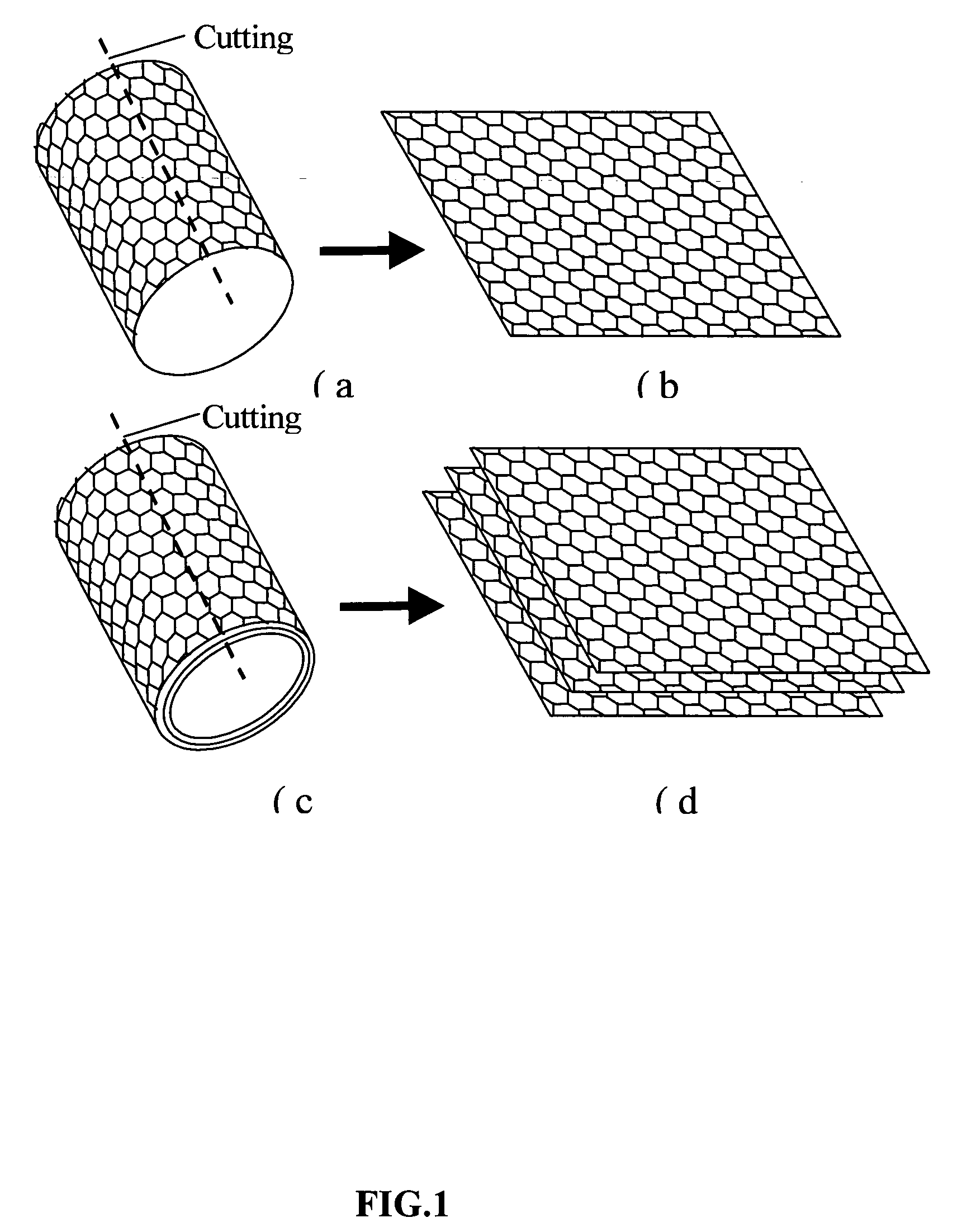Process for nano-scaled graphene plates
a graphene plate and nano-scale technology, applied in the direction of nano-carbon, material nanotechnology, carbon compounds, etc., can solve the problems of increasing cost, complicated, slow and expensive purification process, and only about 15% yield of pure carbon nanotubes with respect to the end product, so as to reduce cost, wide property range, and process ease
- Summary
- Abstract
- Description
- Claims
- Application Information
AI Technical Summary
Benefits of technology
Problems solved by technology
Method used
Image
Examples
example 1
[0038] One hundred grams of polymeric carbon, prepared by oxidation of PAN fibers at 250° C. and partial carbonization of the oxidized PAN at 500° C., were treated in a mixture of sulfuric and nitric acids at concentrations to yield the desired intercalation compound. The product was water washed and dried to approximately 1% by weight water. The dried fibers were introduced into a furnace at 1,250° C. to effect extremely rapid and high expansions of nano-scaled graphite crystallites. The exfoliated carbon sample, chopped into a short fiber form (<1 mm length), was then ball-milled in a high-energy plenary ball mill machine for 24 hours to produce nano-scaled particles.
example 2
[0039] Same as in Example 1, but the carbonization temperature was 1,000° C.
example 3
[0040] A phenol formaldehyde resin was heat treated in an inert atmosphere at a HTT in the range of 350-900° C. to obtain polymeric carbon, which was ground to mm-sized particles and then subjected to solution treatments to obtain exfoliated polymeric carbons. Samples containing exfoliated graphite crystallites were then ball-milled to become nanometer-sized powder.
PUM
| Property | Measurement | Unit |
|---|---|---|
| temperature | aaaaa | aaaaa |
| temperature | aaaaa | aaaaa |
| diameter | aaaaa | aaaaa |
Abstract
Description
Claims
Application Information
 Login to View More
Login to View More - R&D
- Intellectual Property
- Life Sciences
- Materials
- Tech Scout
- Unparalleled Data Quality
- Higher Quality Content
- 60% Fewer Hallucinations
Browse by: Latest US Patents, China's latest patents, Technical Efficacy Thesaurus, Application Domain, Technology Topic, Popular Technical Reports.
© 2025 PatSnap. All rights reserved.Legal|Privacy policy|Modern Slavery Act Transparency Statement|Sitemap|About US| Contact US: help@patsnap.com

